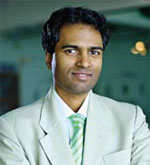Dust does not discriminate, so why should decision-makers?

B Surendar
For almost 13 months at a stretch, Kuwait-based air filtration consultant, Dr Iyad Al Attar held court on all things air filtration. The series, which started in February 2011, looked at the history of air filtration and progressed to performance characteristics, such as the parameters affecting pressure drop and the face velocity effect on efficiency; filter design, including the different types of media and their characteristics and the different filtration stages; aerosol characteristics; and the effect of climate on filter performance.
For me perhaps the most interesting part of the series was when he elaborated on sand storms. I remember him telling once how when viewed from a sandstorm perspective, air filtration was an absolute necessity and not an after-thought or something that could be avoided; despite compelling evidence, he rued, air filtration was simply not getting its place in the sun.
Dust in the GCC countries is mainly in the form of silica, which when inhaled at a certain concentration, is a threat to the human body. By extension, it is not to be viewed as an “exotic component” for deploying only in specific places and not in everyday residential and commercial spaces. Dust does not discriminate, so why should decision-makers?
Further, given the intensity of sandstorms in the region, it is perhaps essential to aim for higher efficiencies in air filtration. Dr Al Attar advocates 95% efficiency as opposed to the internationally accepted 65% efficiency, adding that intelligent filter design available in the market makes high-efficiency filtration possible and accessible, in terms of energy consumption. In old designs, he says, a 95% efficient filter would require about 170 pascals. However, with newer designs, he says, it is possible to achieve the same efficiency with 95 pascals.
Despite compelling evidence, the perception lingers that high-efficiency air filtration is expensive. And then of course, there is the mother of all impediments – “the capital cost involved can be avoided”.
Dr Al Attar is starting a new series in this issue. The compulsion is to elaborate on the science and technology in greater detail. We live in an age of nano particle sizers, which has opened the doors to a better understanding of dust particles. There is now scope to conduct research on even lower particle sizes to characterise filter performance, on sizes lower than 500 nanos, he says with enthusiasm. It opens up the possibility of probing further in terms of flow rates.
It’s going to be quite a ride, I reckon!
– B Surendar
Copyright © 2006-2025 - CPI Industry. All rights reserved.